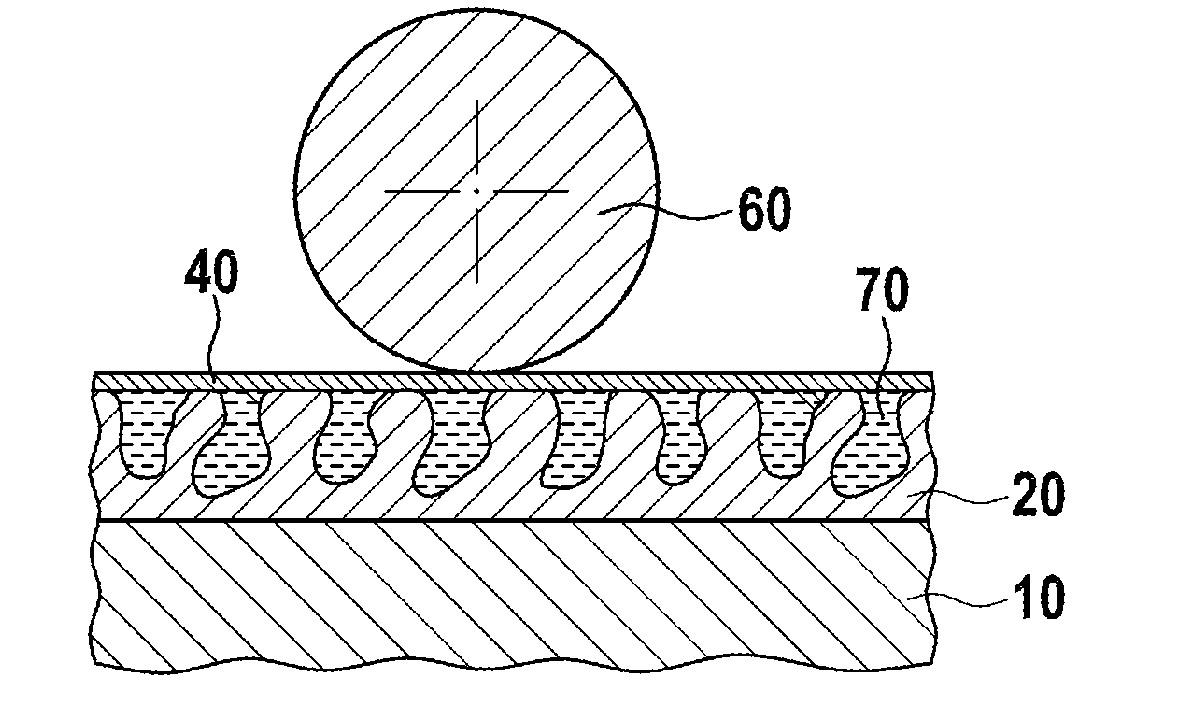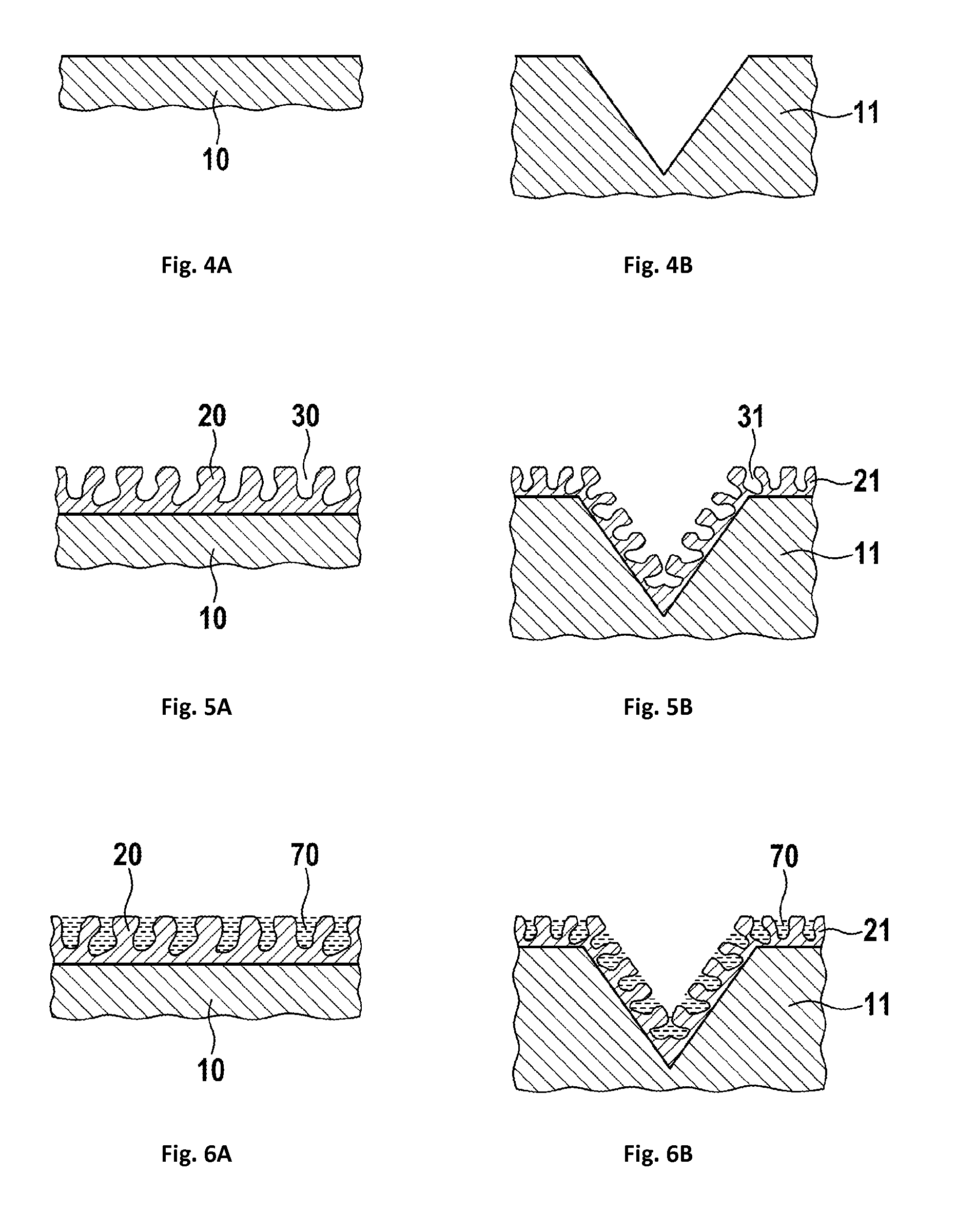Self-Lubricating Slipring
a self-lubricating, slipring technology, applied in the direction of current collectors, electrical equipment, special surfaces, etc., can solve the problems of increased wear, extended life, and significant delay in opening other cavities, so as to improve the electrical contact and mechanical characteristics, reduce the wear of the surface, and store safe
- Summary
- Abstract
- Description
- Claims
- Application Information
AI Technical Summary
Benefits of technology
Problems solved by technology
Method used
Image
Examples
Embodiment Construction
[0020]In FIG. 1, a slip ring track in a first embodiment is shown. A slip ring track 10, 11 has a contact area 20, 21 with a plurality of pores or cavities 30, 31. These cavities contain a lubricant 70. Furthermore, they are covered with a top coating 40, 41. A slip ring brush 60 which is a wire brush comprising a wire of conductive material is sliding on top of the top coating and on the contact area, when the top coating has been worn off. It is noted that the relations of sizes are not in scale. In general, the thickness of the contact area 20 is in an order of magnitude of some tenths of micrometers. A preferred range is between 30 and 100 micrometers. In contrast thereto, the diameter of a slip ring brush 60 is in the order of magnitudes of millimeters. A preferred range of diameter is between 0.1 millimeters and 3 millimeters. In all figures, the thickness of the contact area 20, the pores or cavities 30, and the top coating 40 have been enlarged to show more details.
[0021]In ...
PUM
 Login to View More
Login to View More Abstract
Description
Claims
Application Information
 Login to View More
Login to View More - R&D
- Intellectual Property
- Life Sciences
- Materials
- Tech Scout
- Unparalleled Data Quality
- Higher Quality Content
- 60% Fewer Hallucinations
Browse by: Latest US Patents, China's latest patents, Technical Efficacy Thesaurus, Application Domain, Technology Topic, Popular Technical Reports.
© 2025 PatSnap. All rights reserved.Legal|Privacy policy|Modern Slavery Act Transparency Statement|Sitemap|About US| Contact US: help@patsnap.com



